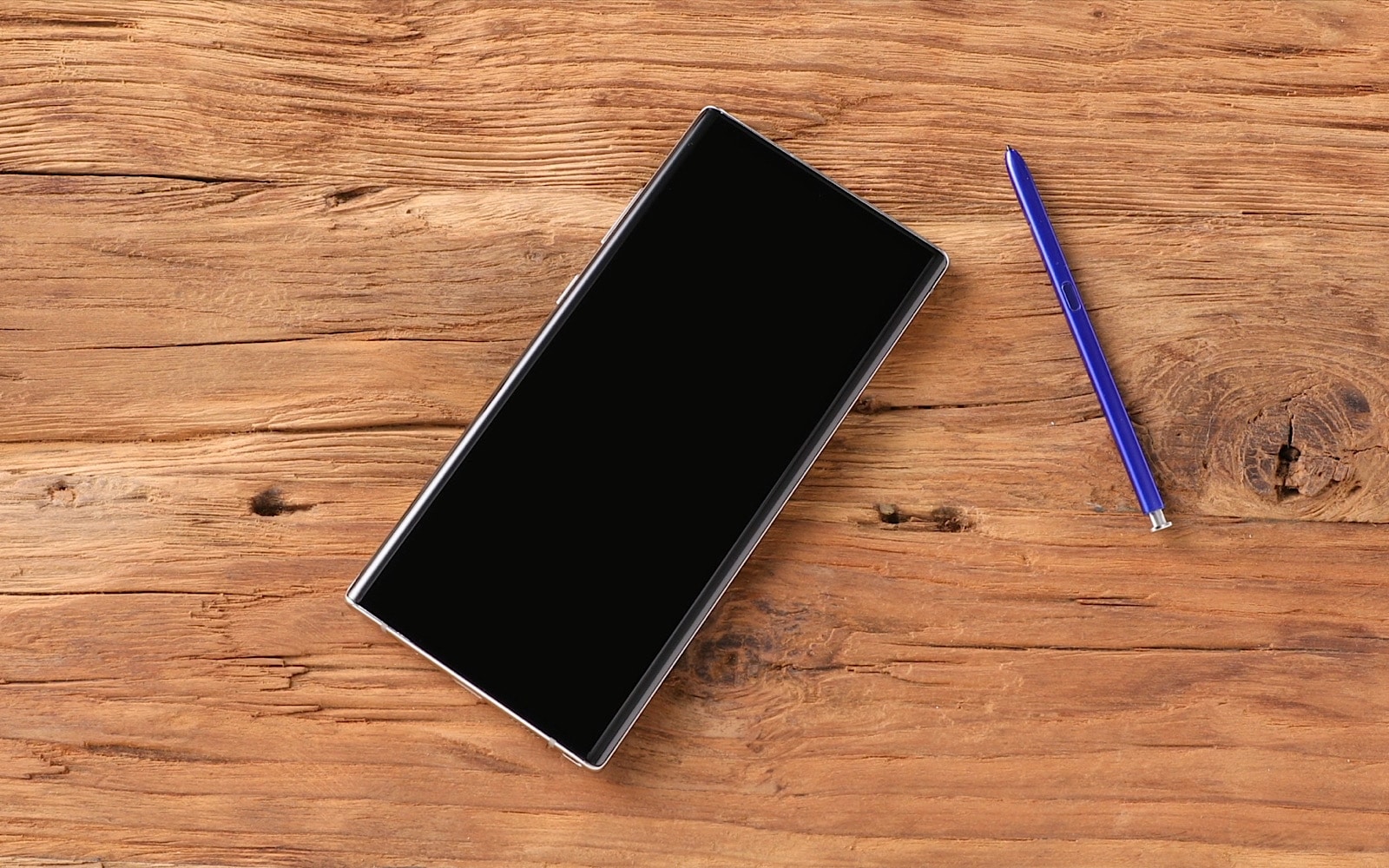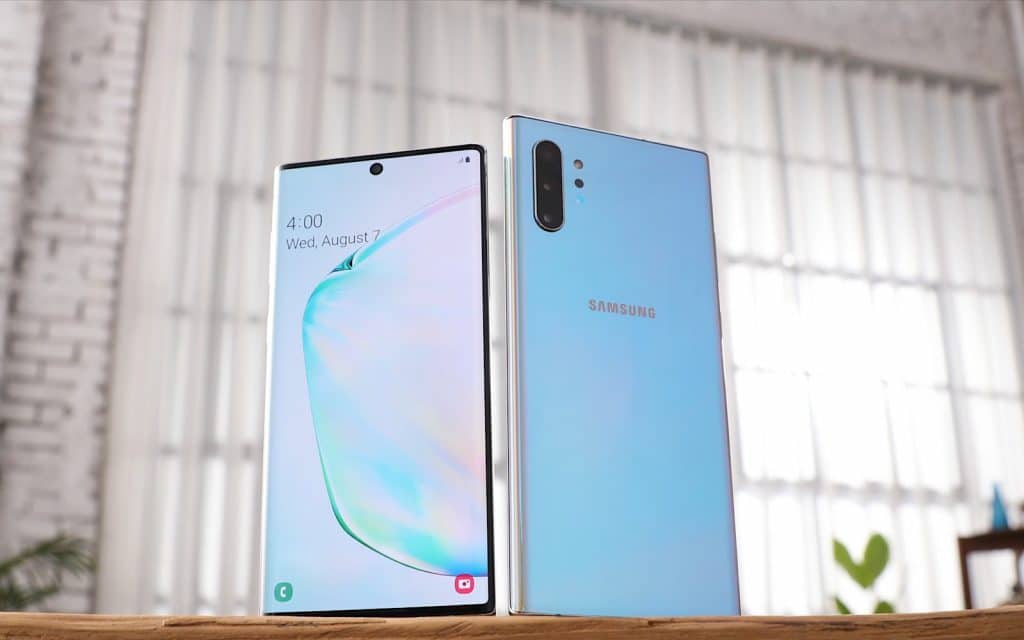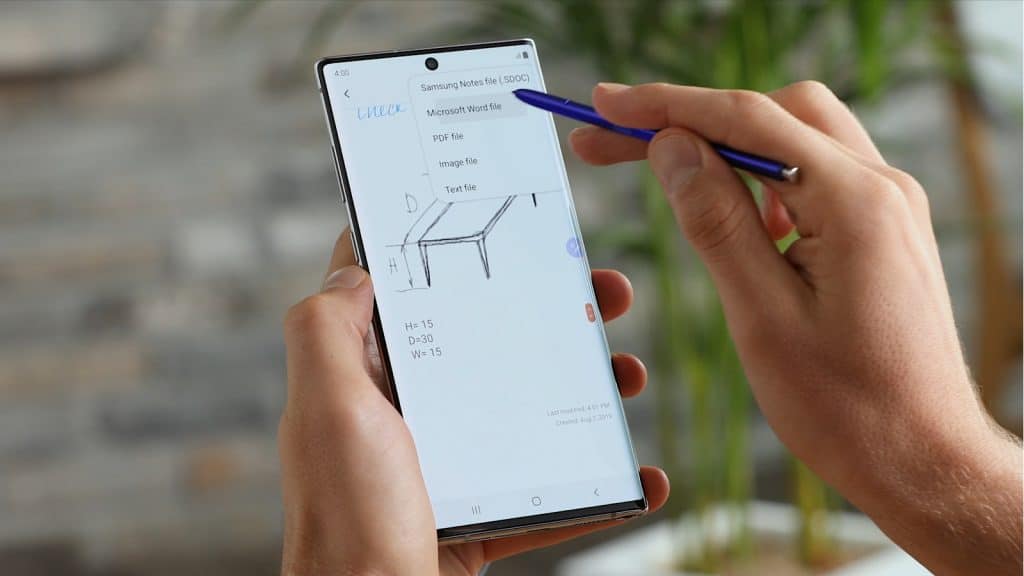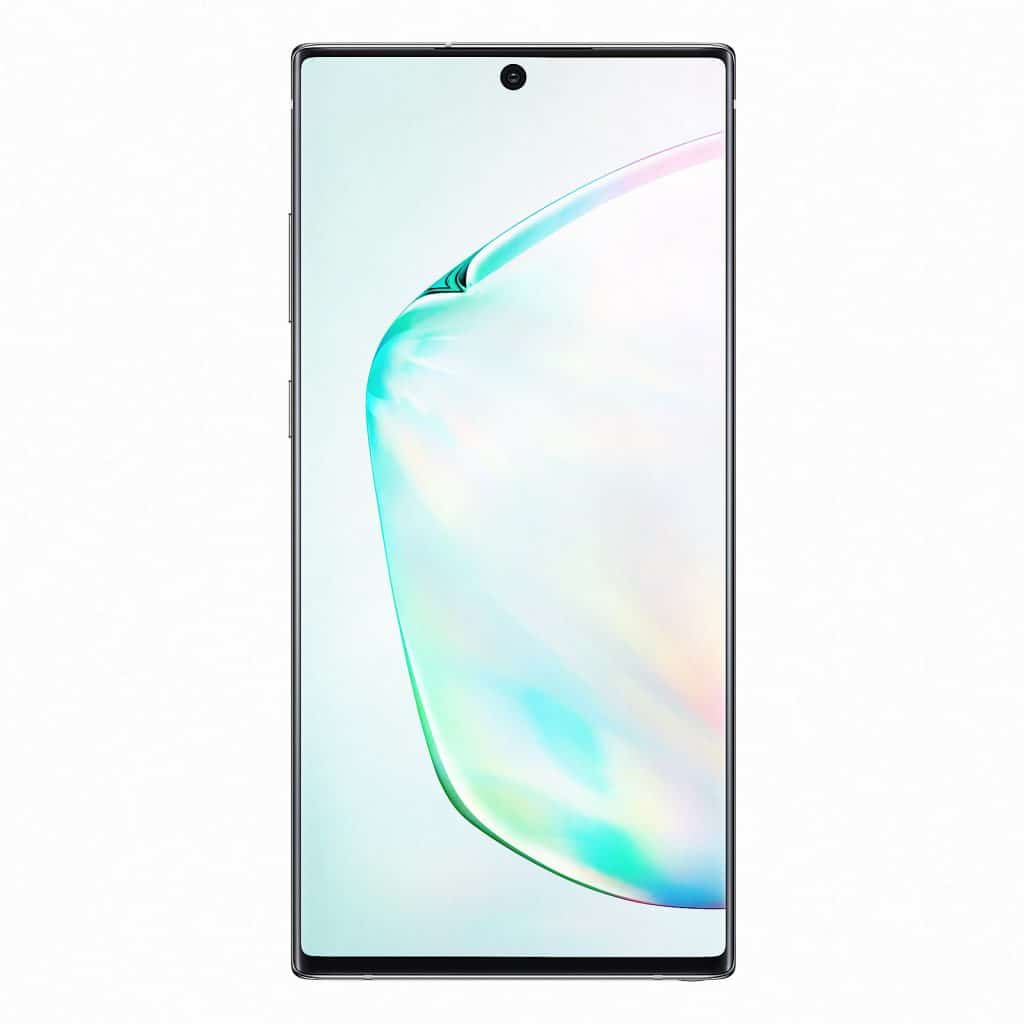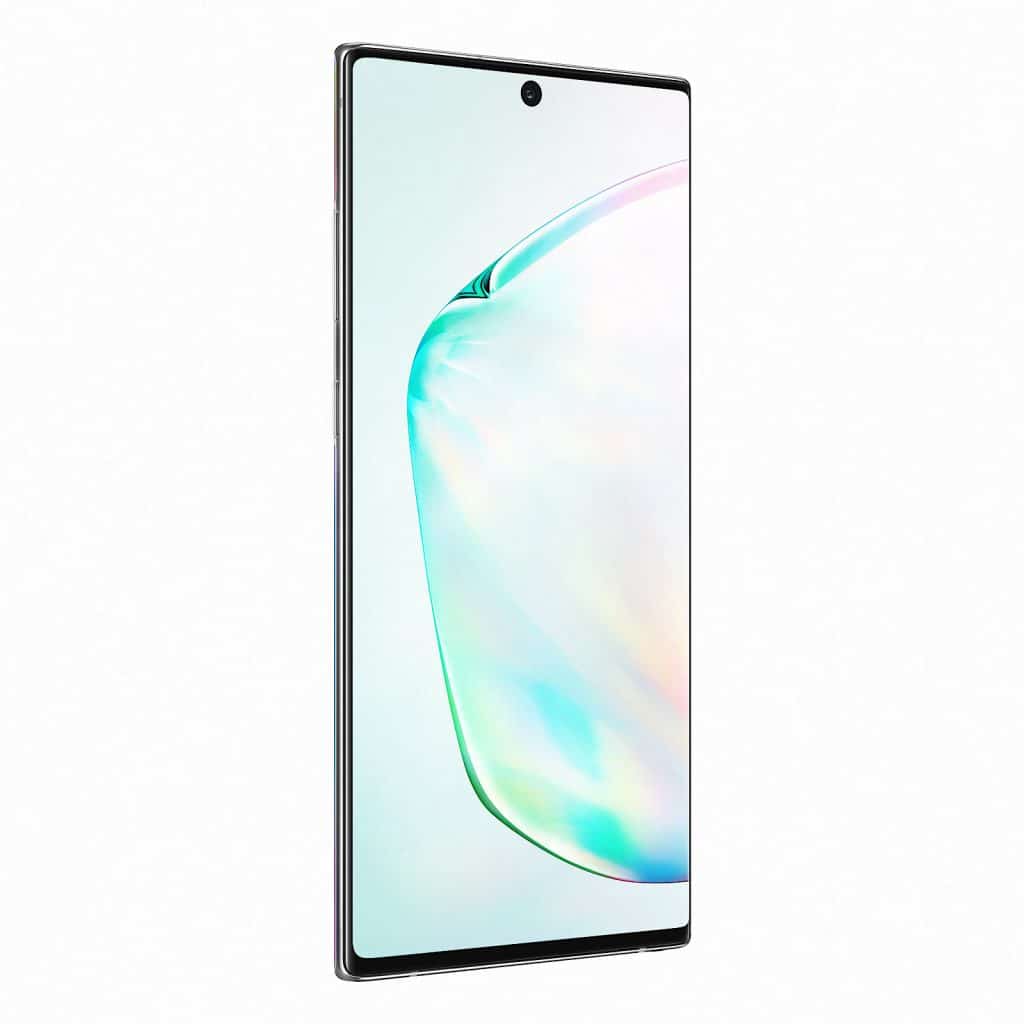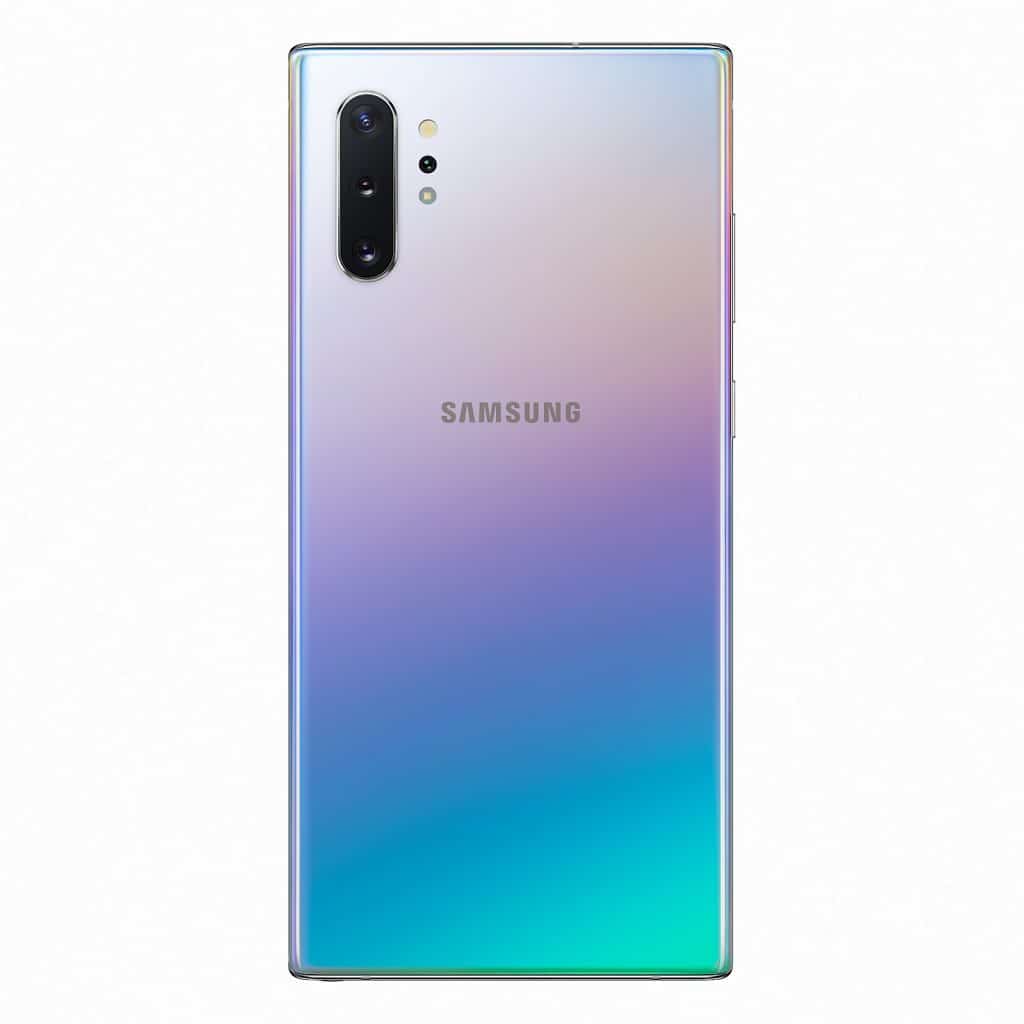After all the rumours, leaks, and every possible hint you could imagine, Samsung’s next big Note is here, and not only does it look nice, it’s bringing features in droves.
If you own a big phone, there’s a good chance you have Samsung to thank. It’s one of the companies that kickstarted the whole big phone movement, a part of the market that was once called a “phablet”, but is now just a phone.
These days, big phones are everywhere, and they’re even in price brackets of all sizes. Big phones tend to have big viewing areas, but they also typically come with big batteries, because there’s more room to pack in a battery behind that enormous screen.
It’s not just about the battery, though, because big phones can also deliver the features, and that’s something where Samsung’s biggest phones, the Galaxy Note series, typically plays.
The Galaxy Note series has long been about productivity, and the sorts of things a big screen can deliver on the go.
When you think of your phone, you might think of it as the device that lets you surf the web, do the social thing, snap pictures, and even (heaven forbid) talk to people. But the Note range is about taking it to that next level, and bridging the gap between computer and phone that little bit more.
We’ve seen developments over the years to push that, and now it looks like Samsung is really going in hard, not only bridging the gap between computer and phone, but also other devices as well, suggesting that this could outright replace your camera, your gaming system, and almost be the very definition of convergence.
What’s new in the Galaxy Note10?
The design of the Note 10 and Note 10+
Whether you call it the Galaxy Note 10 or the Galaxy Note10, you’ll find two main models coming out: there’s the Note 10 and the Note 10 Plus, and for the most part, they are very similar.
The Note 10 features a 6.3 inch Full HD+ screen that stretches from end-to-end with only a skerrick of a bezel, and offers curved edges that help makes the screen feel like it’s flowing off the sides. It’s not the Quad HD+ screen we’re used to seeing on the Note range, producing a slightly smaller take on the Note phone.
On the other hand, the Note 10+ offers a 6.8 inch Quad HD+ screen with a similar design and practically no bezels, meaning it’s a bigger take on the Note all-screen look we’re seeing in this generation.
Regardless of the model you choose, it’s big and impactful, and the camera is in the centre, almost a pinhole in that ginormous screen.
And to that we say “Yessss… that’s what you should have done on the Galaxy S10 and S10+”.
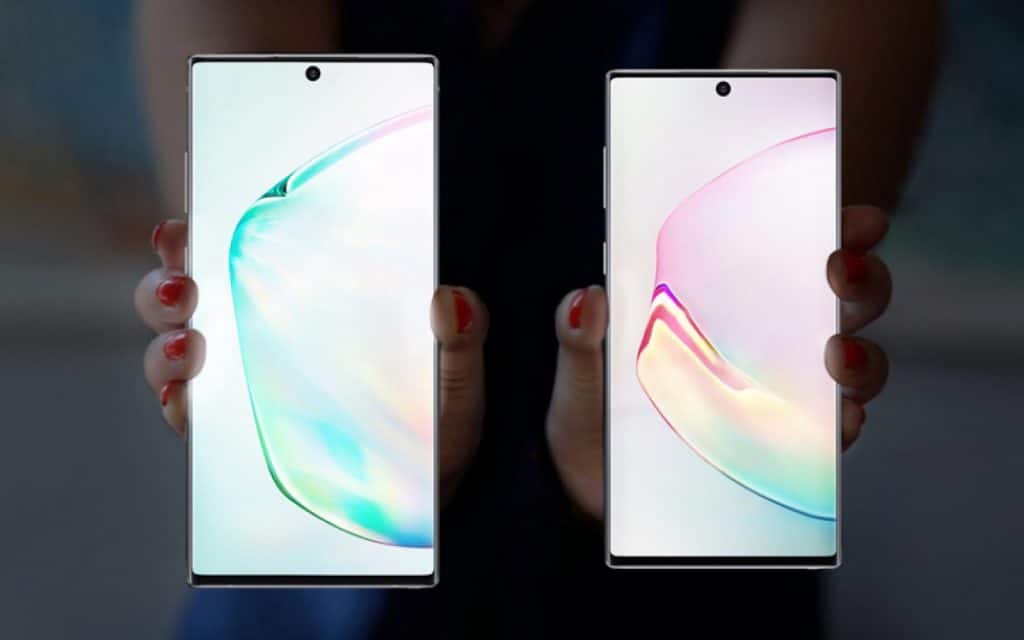
Simply put, there’s no side camera here like there is on the Galaxy S10+, and less of a chance for OCD folks to go a little crazy at the thought of an off-symmetry setup for their phone’s front.
The back is a little different for the Note 10 range, too, with a camera set up in the vertical position, similar to devices like the Apple iPhone XS Max, as well as the Huawei P30 Pro, though also much like Samsung’s recently launched mid-range device, the Galaxy A70.
Weight of the phones is a little different, too, because if you fancy a lighter big phone, the Note 10 standard weighs 168 grams, while the Note 10+ weighs 196 grams. What’s a few grams between friends?
The specs of the Galaxy Note 10 and Note 10+
Beyond the design, there’s what’s under the hood.
The specs are a little different from last year and even this year’s S10 range, with a move to the 7 nanometer Exynos 9825 chip in Australia, and either 8GB or 12GB RAM dependent on the model you go for. If you go with the Note 10 standard, it’s 8GB, while the Note 10+ will offer 12GB.
Given that 3 to 4GB seems like the sweet spot for Android phones, either should be totally fine for using Android, which comes in the form of Android 9.0 “Pie” out of the box. If you were expecting Android Q, it’s not finished yet, and usually reserved for a first release on Google’s Pixel phones, with the next due out in October.
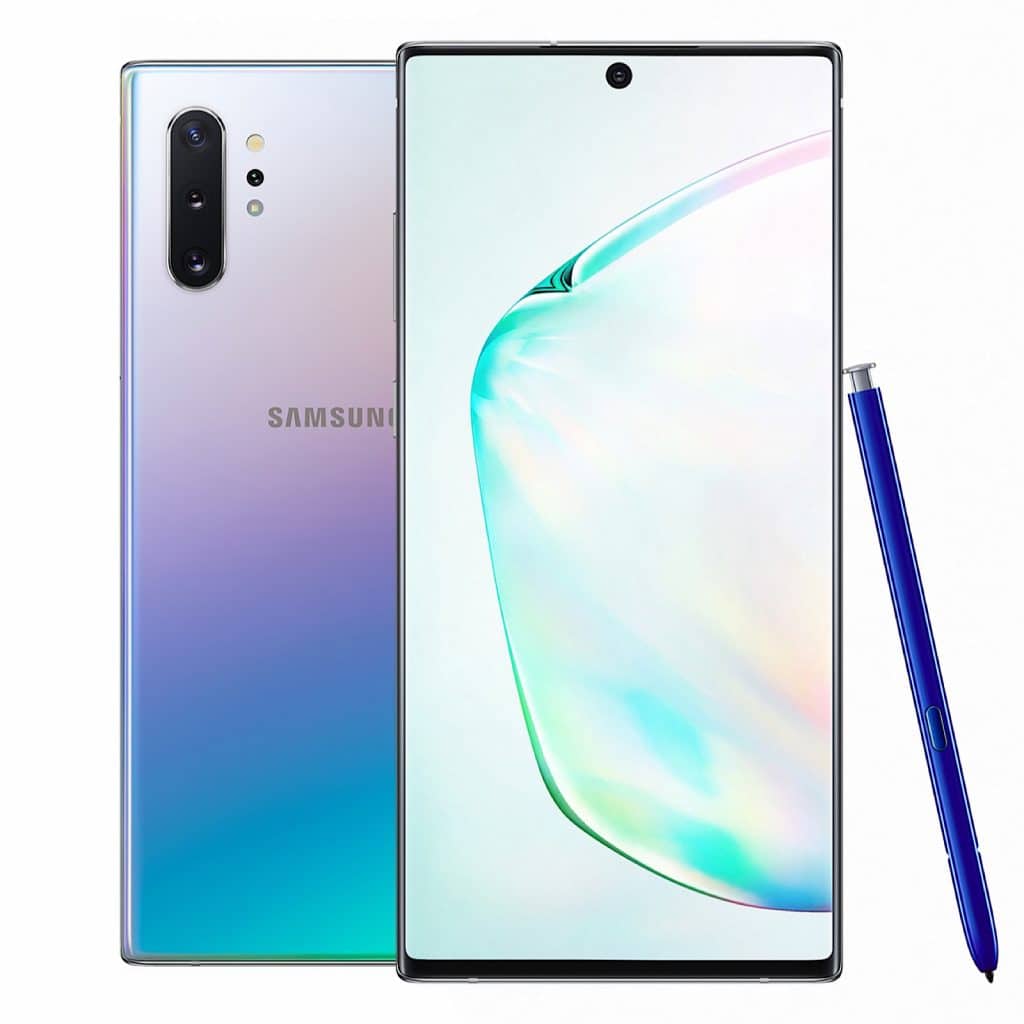
The connections are much the same, with 802.11a/b/g/n/ac/ax WiFi 6, Bluetooth 5, NFC, and Category 20 4G LTE, though there will be a 5G model of the Note 10+ as well.
And the cameras are very similar to what you could find on the S10+, with an almost identical array between them.
But while the Note 10 echoes the cameras of the S10+, the Note 10+ gets the cameras of the S10 5G, meaning you get an ultra-wide camera, a standard camera, a telephoto camera (all just like the Note 10), but also a depth camera for better soft-background images using Samsung’s take on the technology, not portrait mode, but rather “Live Focus” mode.
The new features of the Galaxy Note 10
The camera can do a lot more this time, however, because even though the specs are close, the features are different.
Samsung is calling it a “pro-grade camera”, with that live focus soft background technology working in video, too, something Huawei started dabbling in with the Mate 20 Pro.
Samsung’s approach will refine this be letting you make the depth of field adjustments yourself, and provide an improved microphone that amplifies the sound of what’s in frame thanks to a “Zoom-In Mic” feature.
There are improvements to video editing and stabilisation, too, with “Super Steady” working to stabilise video footage, while Samsung’s app-based video editor can be used with the S-Pen, and even use tools such as Adobe Premiere Rush with more accuracy thanks to the S-Pen stylus.
The S-Pen stylus is seeing some notable changes in the Note 10, too, such as support for handwriting to text, making it possible to convert your scribbles into real text, sending it to Microsoft Word, among other apps, later on.
Samsung’s 2019 S-Pen in the Note 10 is now a unibody design, and while it can trigger the camera like it could last year, the S-Pen adds “Air actions” this time around. Similar to what launched on the Galaxy Tab S6 last week, it means developers will be able to program in other features such as waving the pen about to do things like controlling music and presentations.
That S-Pen can be used to annotate on videos, as well, making it handy if you’re recording from the screen and want to scribble your thoughts or random bits down at the same time.
Annotation might lead to improved productivity, but so too will a built in DeX mode that only needs you to plug the Note 10 into a USB Type C connection and use the phone as your computer.
In fact, that connection doesn’t just work as DeX, but also DeX for a computer, because DeX now lets you drag files between the Note 10/Note 10+ and a PC or Mac, while a direct link to Windows computers will see notifications, messages, and photos without having to check the phone.
All work and no play makes something something go a little crazy, and so the Note 10 range also features an HDR10+ certified Dynamic AMOLED display that is even brighter than previous models, handy for watching videos, looking at photos, and playing games.
Because, yes, games are a part of what Samsung is pushing across in the Note 10 range, including what the company says is “the world’s slimmest vapour chamber cooling system” and support for an AI-based “Game Booster” to improve gaming performance and optimise power consumption as you play. There’s also a mode we’re particularly curious about called “PlayGalaxy Link P2P” which apparently works as a streaming service and should allow Note users to play PC games on the go. Curious.
Missing in action
Two features on the Note range do go missing in action, however, as the 3.5mm headset jack disappears, and the Bixby button goes, as well.
You might be a little annoyed at the former, though it is the way of the world, as companies ditch the 3.5mm headset jack thanks in part to USB Type C being able to convert the connection, and Bluetooth audio being as good as it is.
At the same time, the Bixby button’s departure we see as a fairly positive move, because while you could remap it, the button was often left unused, and even forced people to change how they held a Samsung phone the past few years.
In the eyes of this reviewer, it will not be missed.
Note 10 and Note 10+ Australian availability
If all of this sounds like the makings of a phone you want, you may be interested to know that availability isn’t far away.
Samsung in Australia has announced that local availability for the Note10 and Note10+ is set for August 23, with prices from $1499 for the Galaxy Note 10 and $1699 for the Galaxy Note 10+. There is also a 5G model of the Note10+, with the Galaxy Note10+ 5G available for $1999.
“The Galaxy Note10 is the culmination of years of Samsung innovation, delivering the features and functionality driven Australians need to make the most of every moment, encased in an elegant and beautifully refined design,” said Garry McGregor, Vice President for IT & Mobile at Samsung in Australia.
“Galaxy Note10 is the ultimate productivity and creativity tool, perfect for empowering Australia’s ambitious achievers to get more out of every day.”
Pre-orders for the Galaxy Note 10 range kick in from August 8, with availability from August 23 across Australia.


